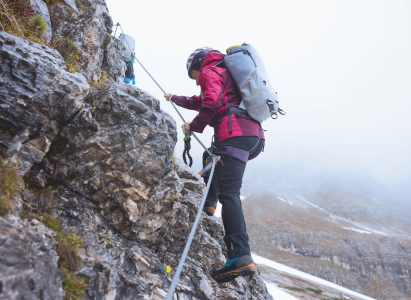
Your backpack is a key piece of equipment when it comes to hiking. But there's a fine line between packing and overpacking. Each hike will need different equipment depending on the terrain you're planning on hiking through, whether you're staying over night, the weather at the time. There are so many different factors you need to take into account whilst packing up your backpack.
Packing your Hiking Backpack
Whether it's a day hike or a weekend stay over, packing your backpack or rucksack starts the same way. Your bag needs to be lined with a heavy duty backpack liner, or even a heavy duty plastic bag. Anything that would be suitable enough to create a waterproof lining. This will help to protect your belonging from the rain and if you accidentally fall into any water.
Packing a Daypack
Packing a hiking backpack for a day trip is a lot simpler than an overnight backpack. The first layer at the bottom of your backpack should be a spare change of clothes. Hopefully you won't need to use them whilst you're out on the hike but it's better to be overprepared in case you do need to change. For another extra layer of protection, you could keep those clothes in a water tight bag.
Then on top of that dry bag, you should pack any of the items that are still essential but you might not need them straight away. That might be things like a camera, spare battery pack, snacks, first aid, spare socks.
Then finally you pack your most important equipment on the top of your rucksack. Any spare waterproofs, rain covers etc. It's also worth thinking about how you're going to store your water. This should be quite high in your backpack so it's reachable at all times. Will you take bottles or hydration packs? If you're looking at using hydration packs, then you may look at storing it outside of the waterproof liner, just incase it leaks. Many hiking backpacks and rucksacks have seperate sections that are specifically for water storage.
Our Mountain Series 25L Backpack comes with an internal hydration storage pocket and drinking tube retainer, to keep water always accessible.
Packing an Overnight Stay Backpack
The same principles apply when you're packing a hiking backpack for an overnight stay. You start off with the least important/the items that you'll need to get out last at the bottom of the bag. That includes any tents, sleeping bag and pads, pillows and spare clothes. You can compartmentalise your packing by using separate packing cubes and dry bags to section out different items.
Once you've got the soft but bulkier items packed at the bottom, you can start to focus on what you will pack in the middle section of the backpack. You want heavier items to be in the section as that will also help with your centre of gravity, and means the pack won't be swinging or too top heavy. Cooking equipment, fuel, food, and stoves are a good example of what should be stored in the middle section of the backpack. If your hiking rucksack doesn't have its own hydration reservoir, then all your water can also get stored in the middle section. Make sure that your water supplies are kept in their own inner dry bag just incase of any spillages.
Then the top layer of your walking rucksack should be the lightest items and any essentials that you may need to grab at any given time. That includes spare socks, hats/caps, portable battery packs, and first aid kits.
The key takeaways you need to remember when it comes to packing your overnight hiking backpack is -
- Be aware of the weight distribution of your backpack when you're packing it.
- You can also attach things like walking poles etc to the outside of your backpack so that it doesn't poke into your back when walking.
- Only take the essentials, don't try to overpack.
- Do a test run with your fully packed hiking backpack. Have it fully packed up, tighten any waist straps etc, get it on your back and start walking around the house and outside with it to see how it feels. This test run might flag up any issues that you can then fix before your hike.
